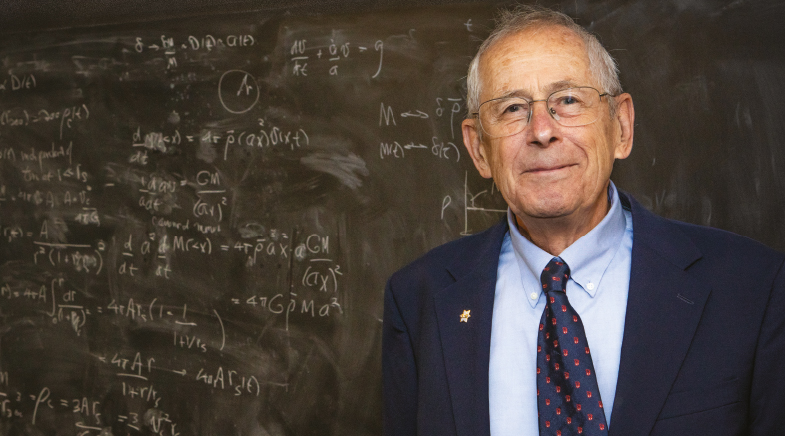Gold-Star Telescopes
-
- from Shaastra :: vol 02 issue 02 :: Mar - Apr 2023

New observational tools and techniques are helping Indian scientists unearth the secrets of the universe.
Dorje Angchuk had grown up in the town of Leh in Ladakh but was stumped when asked, during an interview for a job at the Indian Institute of Astrophysics (IIA), whether he had been to Hanle. He had not heard of this historic village, the site of a 17th-century Buddhist monastery, only 257 km from his hometown.
Angchuk had studied Electronics and Communication Engineering at the Sardar Vallabhbhai National Institute of Technology in Surat, living through a cyclone and a plague there. "Every student in Leh is prepared to go out to study," he says. He got two job offers, one from the Power Grid Corporation and the other from the IIA in Bengaluru. Scientists at IIA were building a telescope in Hanle. Would Angchuk be interested in providing engineering support?
Angchuk accepted the job offer and went to Hanle. It seemed remote and desolate, at an imposing altitude of 4,500 metres above sea level, 1,000 metres higher than Leh. Angchuk was puzzled and wondered why anyone would want to build a telescope here. He thought of a hill 30 km from Leh, from where he could return home every night. Hanle didn't have good road connectivity. Life wouldn't be easy in the village.
An IIA team, however, had searched long and hard for the ideal place to build a telescope. This committee, led by former Tata Institute of Fundamental Research (TIFR) director B.V. Sreekantan, had chosen Hanle over other candidates because of its unique meteorological and topographic attributes. The mountain village is a rain-shadow region. Moisture-laden air is not good for telescopes because it absorbs much of the light coming from the stars. A dry climate also provides cloudless skies, an invaluable resource for optical astronomers. Hanle was one of the best places in the world to build a telescope. In fact, it was good for more than one.
Construction started on the first telescope in the mid-1990s. Angchuk joined the observatory in the thick of construction, watching first light in September 2000. Now called the Himalayan Chandra Telescope (HCT), it provides observations in the optical and infrared band, apart from a spectrograph to split starlight into its constituent wavelengths. Angchuk often stays in Leh, especially in winter. The telescope is operated from Hoskote near Bengaluru.
PAST ISSUES - Free to Read


Have a
story idea?
Tell us.
Do you have a recent research paper or an idea for a science/technology-themed article that you'd like to tell us about?
GET IN TOUCH














